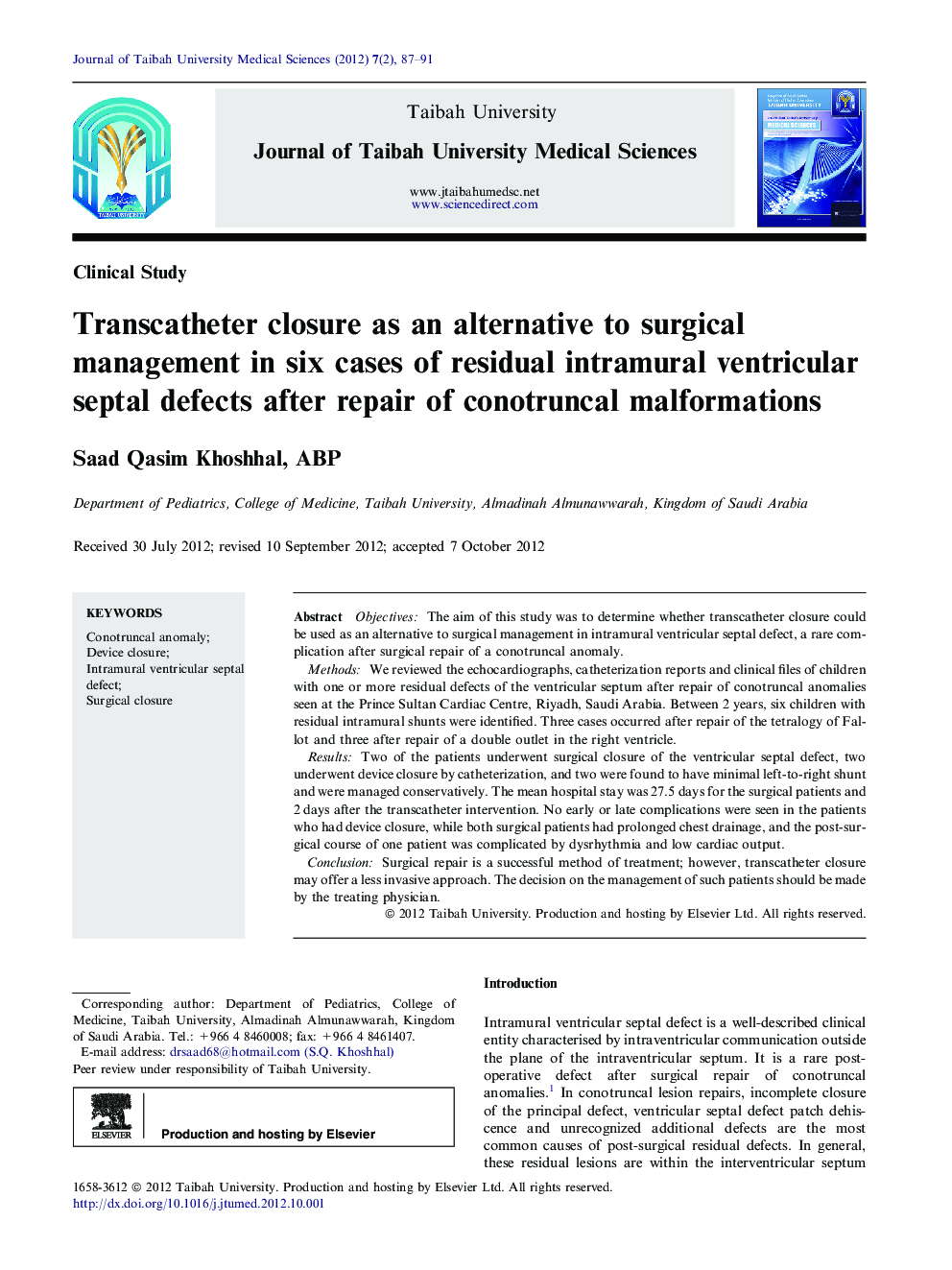| Article ID | Journal | Published Year | Pages | File Type |
|---|---|---|---|---|
| 3484750 | Journal of Taibah University Medical Sciences | 2012 | 5 Pages |
ObjectivesThe aim of this study was to determine whether transcatheter closure could be used as an alternative to surgical management in intramural ventricular septal defect, a rare complication after surgical repair of a conotruncal anomaly.MethodsWe reviewed the echocardiographs, catheterization reports and clinical files of children with one or more residual defects of the ventricular septum after repair of conotruncal anomalies seen at the Prince Sultan Cardiac Centre, Riyadh, Saudi Arabia. Between 2 years six children with residual intramural shunts were identified. Three cases occurred after repair of the tetralogy of Fallot and three after repair of a double outlet in the right ventricle.ResultsTwo of the patients underwent surgical closure of the ventricular septal defect, two underwent device closure by catheterization, and two were found to have minimal left-to-right shunt and were managed conservatively. The mean hospital stay was 27.5 days for the surgical patients and 2 days after the transcatheter intervention. No early or late complications were seen in the patients who had device closure, while both surgical patients had prolonged chest drainage, and the post-surgical course of one patient was complicated by dysrhythmia and low cardiac output.ConclusionSurgical repair is a successful method of treatment; however, transcatheter closure may offer a less invasive approach. The decision on the management of such patients should be made by the treating physician.
